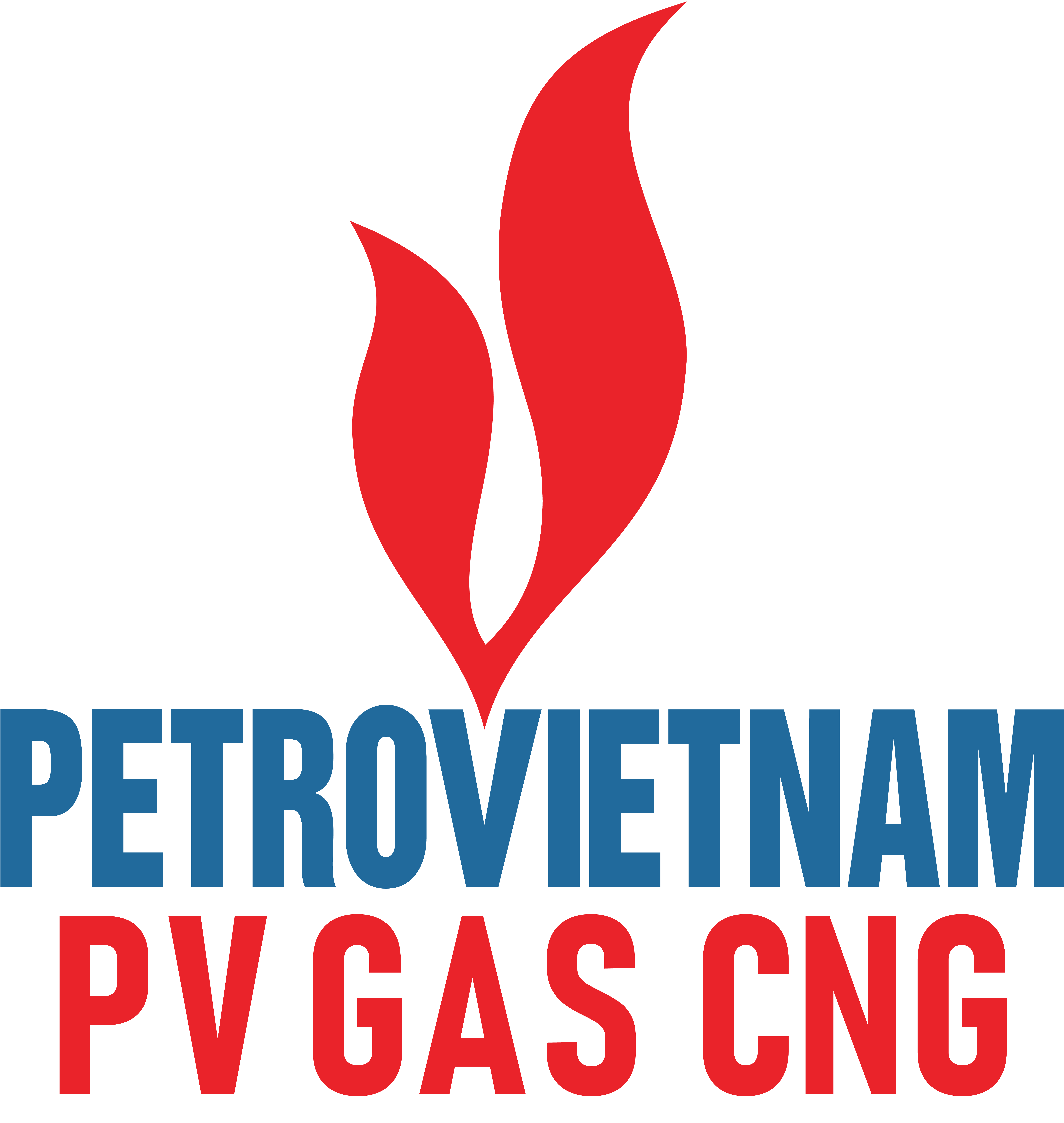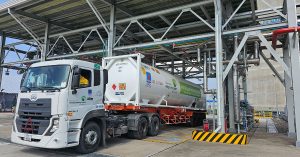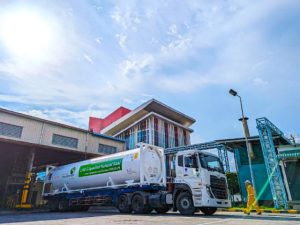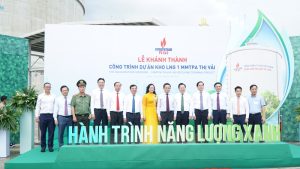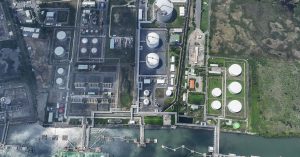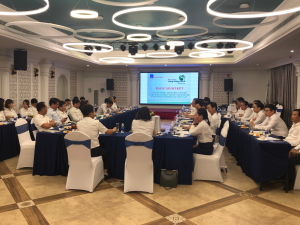To meet the increasing demand from power plants, industrial and residential customers, while domestic gas sources are on the decline, LNG import to make up for this shortfall is a breakthrough solution to ensure national energy security and the country’s development.
Using LNG is in line with the general trend in the world
LNG is a colorless, odorless, non-toxic and non-corrosive liquefied natural gas with a flame temperature of about 2,340ºC and lighter than air. Composed mainly of methane (about 95%) and small amounts of other gases, LNG is liquefied when deeply cooled to -162°C after impurities have been removed (depending on the proportions of the mixture in the gas), making it easy to store and transport. This is an energy with great potential because LNG is the cleanest fossil fuel. Natural gas combustion does not emit soot, dust or smoke. It produces 30% less CO2 than fuel oil and 45% less than coal, with a two-fold reduction in nitrogen oxide emissions and virtually no harmful SO2 emissions. This is based on a series of studies comparing the total lifecycle emissions of both fuels based on extraction, production, transport and combustion in overseas power plants. LNG also has a higher energy value, which means it can generate more electricity per tonne when compared to black coal. A 2008 report by the consulting firm WorleyParsons for Woodside Petroleum found that LNG generates 7.1 MWh per tonne compared with 3 MWh from black coal when both fuels are burned in high efficiency power plants.
The use of LNG is completely in line with the general trend of the world, LNG plays the role of a “bridge fuel” in the process of energy transition to green, clean, and more environmentally friendly fuels. This is considered a solution, a “salvage” for many problems related to greenhouse gas emissions, to ensure the goal of energy security for sustainable development.
In our country, LNG import is also considered an important solution to ensure national energy security. Politburo issued Resolution No. 55/NQ-TW dated February 11, 2020 on the strategic orientation of Vietnam’s national energy development to 2030, with a vision to 2045. In which, the development tasks for gas industry was set out: “Prioritizing investment in technical infrastructure for LNG import and consumption” and “Focus on rapid development of gas-fired thermal power using LNG, gradually turning gas power into an important source of electricity, support for system throttling”.
Vietnam intends to use natural gas to drive economic growth, which is forecasted at a rate as high as 7% annually over the next decade. Given the declining domestic gas production, uncertainty over seasonality of hydropower, instability of renewables, and growing concerns about the sustainability of coal-fired power generation, as well as implementing solutions to ensure the goals committed by the Prime Minister at the COP26 conference on carbon neutrality by 2050, LNG will be an obvious and indispensable energy source for the country and will soon become an important component of the nation’s energy growth towards a cleaner energy future in Vietnam. The draft Power Plan VIII clearly defines the development perspective as minimizing coal-fired power plants with the goal of minimizing CO2 emissions; do not develop new coal-fired power plants; consider converting some coal-fired power sources to LNG.
Vietnam’s efforts to participate in the LNG market
Our country entered the LNG market as a very new player in a market that has been developing for more than 50 years. This requires the import of LNG to follow international LNG trading practices. Vietnam does not currently have a set of technical standards related to the design, construction and operation of LNG importation facilities (in fact, the Government has issued Circulars and Decrees to jointly address the issues for LNG and LPG, but these products have different physical properties and safety requirements, and these respective markets have little in common). Besides, the current legal framework for LNG projects for electricity in Vietnam has not been fully developed yet. In the past 2 years, LNG prices have experienced huge fluctuations due to the impact of the Covid pandemic and the war between Russia and Ukraine, which affects the consumption capacity of price-sensitive markets like Vietnam if the government does not provide reasonable support under particular conditions. On the other hand, LNG has its own characteristics such as the level of long-term commitments, market volatility and influence of political and social events,… The world energy market in general, LNG in particular is currently in a state of instability due to geopolitical events.
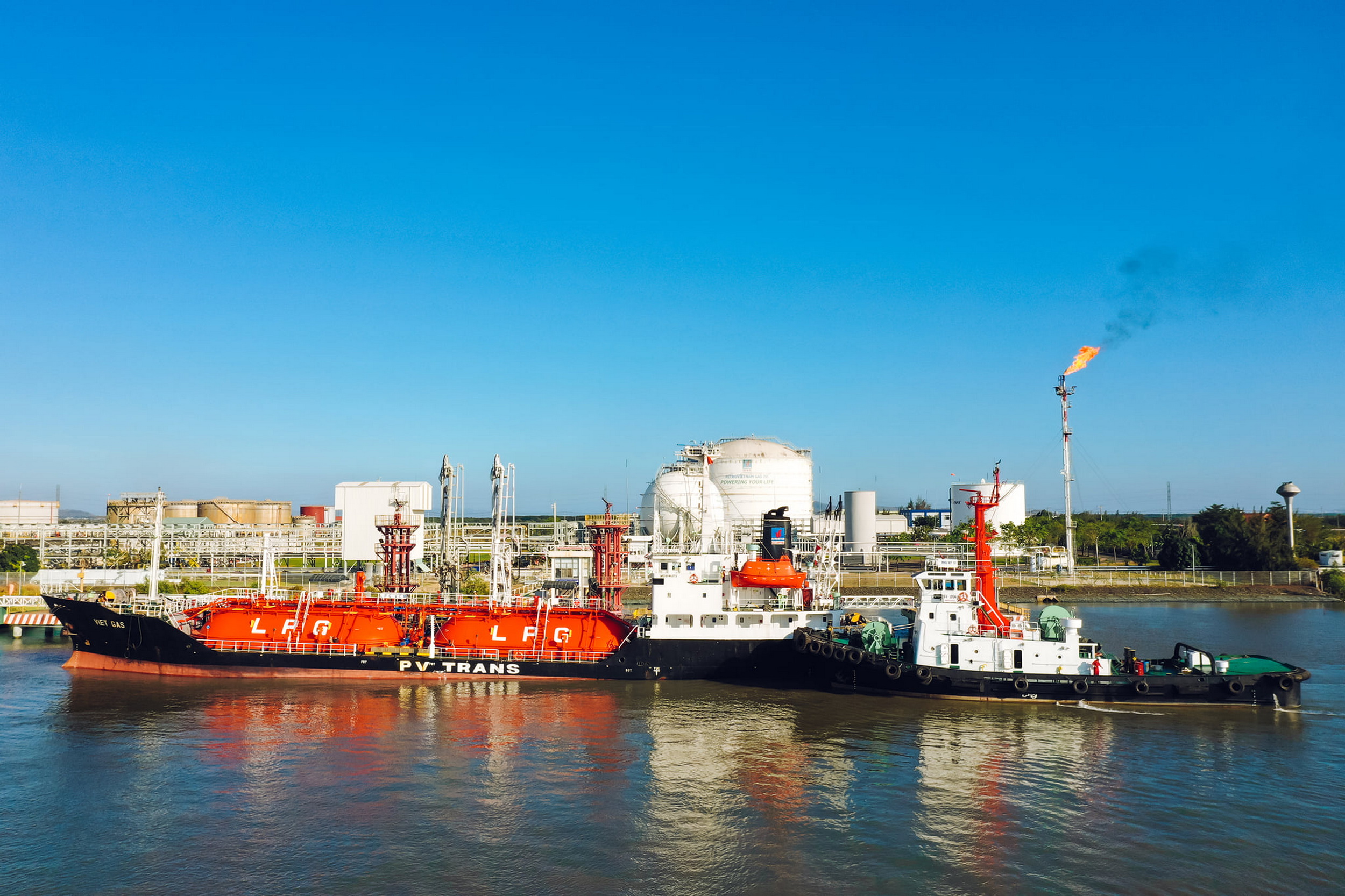 PV GAS Vung Tau Terminal (Thi Vai Terminal) will add many new functions and new looks when LNG Project is completed and put into operation.
PV GAS Vung Tau Terminal (Thi Vai Terminal) will add many new functions and new looks when LNG Project is completed and put into operation.Specifically, LNG gas power projects have advanced technology and large investment capital, so investors need experience and financial capacity. In addition, the competent authorities do not have enough experience in this field, which may affect the progress and quality of investor selection for projects. The electricity price mechanism using LNG fuel is not fully regulated.
Assessing the important role of LNG in ensuring national energy security in the future, the Party, Government, ministries and agencies are all very interested in developing the LNG market – which is the basis for legal framework to manage, monitor and promote the development of this supercooled fuel in Vietnam. The government is in the process of developing and formulating mechanisms and policies to bring LNG into Vietnam market, including issues such as accepting a floating market price mechanism with high volatility, commitment to long-term consumption off-take,…
As a typical and key representative of Vietnam’s gas industry, with experience and ability to operate gas infrastructure systems along with market understanding, PV GAS has always actively been at the forefront of implementation of the Government’s strategy and orientation on LNG, contributing to ensuring national energy security. Mr. Hoang Van Quang – General Director of PV GAS said that PV GAS has carried out various campaigns to promote natural gas as a better solution and PV GAS is also the “Pioneer” to import LNG to gradually replace more polluting fuels such as coal, oil,… at thermal power plants in Vietnam’s power system, converting the energy mix to a “greener” state. Renewable energy is thriving in our country. However, this development needs to be considered and evaluated with a reasonable roadmap, ensuring a harmonious proportion. In particular, basic energy sources such as LNG and natural gas will still play an important role, because this is also a reliable source of background capacity when renewable energy accounts for a large proportion in the power source structure to ensure the system stability, while meeting environmental objectives.
In the field of LNG, PV GAS will strive to play the role of a focal point for investment and import of LNG for consumers nationwide in order to effectively perform the role of a management tool and regulate the gas and LNG market; Prioritize resources, quickly invest in infrastructure for LNG import and distribution to ensure a stable and long-term supply for existing customers, stimulate the formation and development of new customers across sectors and regions with the orientation of socio-economic development; To develop Thi Vai, Binh Thuan and Northern areas into LNG hubs; Strive to import LNG from 2022. In which, PV GAS’ LNG project in Thi Vai is being actively implemented, aiming to provide imported LNG to supply Nhon Trach power plants and other consumers in the Southeast region. In addition to bringing benefits to all parties involved, more importantly, LNG Thi Vai Terminal and Nhon Trach 3 & 4 Power Plants will contribute to ensuring the demand for gas as well as electricity for the industrial sector is increasingly urgent in the Southeast key economic region.
Along with investing in infrastructure, preparing for the import of LNG, PV GAS has been joining Vietnam Oil and Gas Group in consulting and developing mechanisms and policies for the Government to resolve issues related to legal framework. In Vietnam, the gas market has been successfully formed and safely operated for many years, which is an important foundation for sustainable development of LNG imports.
Aware of the responsibilities and key roles assigned by the Party, Government and Vietnam Oil and Gas Group in implementation of the Strategy, Planning on development of Vietnam’s gas industry, objectives, orientations and solutions for PV GAS development is implemented in close accordance with Gas Industry Development Strategy and Planning, including pioneering in the LNG market; consistent with the orientation of extensive, synchronous and sustainable development, reaching regional and international levels, meeting the requirements of bringing green and clean energy sources to serve the country’s socio-economic development, contribute to ensuring the national food and energy security; at the same time, contributing to realization of the country’s commitments on emission reduction.
